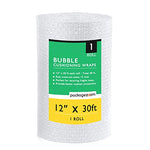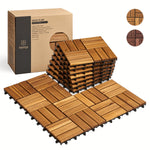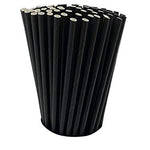You have no items in your shopping cart.
In a world increasingly focused on environmental issues and sustainable living, the fashion industry has undergone a transformative shift. As consumers become more conscious of their ecological footprint, the demand for eco-friendly and ethically produced clothing has skyrocketed. In this article, we will embark on a journey through the realms of "recycle, reuse, renew, rethink shirt", exploring the various aspects of sustainable fashion, the importance of embracing eco-conscious practices, and how you can make a positive impact without compromising on style.
1. Understanding the "Recycle, Reuse, Renew, Rethink Shirt" Movement
Sustainable fashion encompasses a wide array of principles that aim to reduce the harmful impact of the clothing industry on the environment. The four R's - Recycle, Reuse, Renew, Rethink, serve as the guiding pillars of this movement, promoting a circular economy where resources are optimized, waste is minimized, and social responsibility is prioritized.
2. Recycling: Transforming Waste into Fashion
Recycling in the fashion world involves converting post-consumer or post-industrial textile waste into new materials or garments. This innovative approach helps reduce the pressure on natural resources and diverts textiles from ending up in landfills. Fabrics like organic cotton, recycled polyester, and upcycled denim are gaining popularity, proving that sustainability and style can go hand in hand.
3. Reusing: Giving New Life to Old Shirts
Reusing clothes is an excellent way to extend their lifespan and reduce the demand for new, resource-intensive garments. Thrifting, clothing swaps, and vintage shopping are fantastic avenues to discover unique pieces while supporting a circular fashion ecosystem. Embracing pre-loved fashion not only reduces waste but also adds character and individuality to your wardrobe.
4. Renewing: Embracing Sustainable Materials
Renewing shirt fashion involves choosing fabrics that have a lower environmental impact. Organic cotton, bamboo, hemp, and Tencel are some eco-friendly materials that have gained popularity due to their sustainable cultivation and biodegradable properties. These materials provide a greener alternative without compromising on comfort and style.
5. Rethinking: The Impact of Conscious Consumption
Rethinking our consumption patterns is crucial for building a sustainable future. Being mindful of our clothing choices, opting for quality over quantity, and supporting ethical brands can significantly contribute to reducing the fashion industry's ecological footprint. Embracing slow fashion encourages us to cherish each garment and make thoughtful purchases.
6. Eco-Friendly Manufacturing: The Key to Sustainable Shirts
Manufacturing processes play a vital role in determining a garment's ecological impact. Ethical fashion brands prioritize sustainable practices, such as using renewable energy, minimizing water consumption, and adopting eco-friendly dyes. Supporting such brands empowers consumers to make a positive impact on the environment.
7. Sustainable Fashion Icons: Leading the Way
Numerous fashion icons and celebrities have embraced sustainable fashion, becoming vocal advocates for the cause. Their influence has encouraged designers and brands to adopt eco-friendly practices and create collections with a conscience. From eco-conscious red carpet looks to everyday sustainable fashion, these icons inspire millions to follow suit.
8. DIY Fashion: Unleashing Your Creativity
Engaging in Do-It-Yourself (DIY) projects allows you to upcycle old shirts and transform them into unique, personalized pieces. From tie-dye techniques to embroidery and fabric painting, the possibilities are endless. Embracing DIY fashion not only enhances your creativity but also reduces textile waste.
9. Eco-Friendly Laundry: Caring for Your Sustainable Shirts
To prolong the life of your sustainable shirts, adopting eco-friendly laundry practices is essential. Opt for cold water washes, biodegradable detergents, and air-drying whenever possible. These small yet impactful changes contribute to a greener laundry routine.
10. Capsule Wardrobes: Minimalism with Maximum Impact
Building a capsule wardrobe centered around timeless, versatile pieces is an eco-conscious approach to fashion. By curating a collection of essential items, you can reduce the need for excessive shopping and contribute to a more sustainable clothing culture.
11. Sustainable Activewear: Embracing Eco-Fitness Fashion
The sustainable movement extends to the world of activewear, with eco-friendly brands offering stylish and functional gym wear made from recycled materials. Embrace sustainable activewear to make a positive impact while staying fit and healthy.
12. Ethical Fashion: Making a Social Difference
Beyond environmental considerations, ethical fashion focuses on the fair treatment of workers and artisans involved in the production process. Supporting ethical fashion brands ensures that everyone involved in creating your shirts is treated with respect and paid fair wages.
13. Sustainable Business Practices: Leading by Example
Large corporations and fashion houses have immense power to influence consumer behavior. Many industry leaders are adopting sustainable business practices, promoting transparency, and setting environmental goals to minimize their carbon footprint.
14. Renting Fashion: A Trend Towards Conscious Consumption
Fashion rental services are gaining popularity, allowing individuals to enjoy trendy pieces without the commitment of ownership. Renting reduces clothing waste and promotes the efficient use of resources.
15. Sustainable Fashion Events: Catwalks for a Cause
Fashion shows and events dedicated to sustainable fashion are becoming more prevalent. These events showcase eco-friendly collections, spreading awareness and inspiring designers and consumers alike.
16. Eco-Friendly Packaging: Wrapping Sustainability
Sustainable fashion goes beyond clothing; it also considers the impact of packaging. Brands that utilize eco-friendly packaging materials prioritize reducing waste and promoting greener practices.
17. Sustainable Accessories: Complementing Your Eco-Style
Sustainable fashion isn't limited to clothing. Embrace eco-friendly accessories, such as bags made from recycled materials, cruelty-free shoes, and ethically sourced jewelry, to complete your sustainable look.
18. Sustainable Fashion for Kids: Cultivating Eco-Consciousness Early
Instilling eco-conscious values in children can create a more sustainable future. Opt for sustainable kids' clothing and teach them the importance of responsible fashion choices.
19. The Role of Technology: Innovating Sustainable Solutions
Technology plays a crucial role in driving sustainable fashion forward. From fabric innovations to supply chain transparency, technological advancements contribute to greener practices.
20. Advocacy and Activism: Driving Change Together
Joining hands with environmental organizations and fashion activists amplifies the impact of sustainable fashion movements. Collective efforts are essential for driving significant change on a global scale.
21. The Circular Economy: Closing the Loop
The circular economy model aims to create a closed-loop system where materials are reused and recycled indefinitely, reducing waste and promoting sustainable fashion practices.
22. Sustainable Fashion Blogs: Spreading Awareness
Online platforms and sustainable fashion blogs are powerful tools for spreading awareness, educating readers, and inspiring positive change in the fashion industry.
23. Embracing Imperfection: Sustainable Fashion and Body Positivity
Sustainable fashion celebrates diversity and promotes body positivity. Embrace garments that make you feel confident and comfortable, appreciating the uniqueness of your body shape and size.
24. Sustainable Fashion Events: Catwalks for a Cause
Fashion shows and events dedicated to sustainable fashion are becoming more prevalent. These events showcase eco-friendly collections, spreading awareness and inspiring designers and consumers alike. From New York Fashion Week to Paris Fashion Week, sustainable fashion has found its place on prestigious runways, proving that style and sustainability can coexist.
Insight: The fashion industry's acknowledgment of sustainability through prominent events is a significant step towards a greener future. These showcases provide a platform for sustainable designers and brands to reach a broader audience, influencing the industry's norms positively.
Source: Eluxe Magazine
25. Eco-Friendly Packaging: Wrapping Sustainability
Sustainable fashion goes beyond clothing; it also considers the impact of packaging. Brands that utilize eco-friendly packaging materials prioritize reducing waste and promoting greener practices. From biodegradable garment bags to recycled shipping materials, eco-conscious packaging solutions are gaining momentum in the fashion world.
Insight: Eco-friendly packaging is a testament to a brand's commitment to sustainability. By minimizing single-use plastics and opting for greener alternatives, fashion companies can significantly reduce their environmental impact.
Source: Eco Warrior Princess
26. Sustainable Accessories: Complementing Your Eco-Style
Sustainable fashion isn't limited to clothing. Embrace eco-friendly accessories, such as bags made from recycled materials, cruelty-free shoes, and ethically sourced jewelry, to complete your sustainable look. Sustainable accessories not only add flair to your outfit but also demonstrate your commitment to conscious consumption.
Insight: Sustainable accessories are a gateway to incorporating eco-consciousness into every aspect of fashion. Supporting ethical accessory brands empowers artisans and promotes responsible consumption.
Source: Green Matters
27. Sustainable Fashion for Kids: Cultivating Eco-Consciousness Early
Instilling eco-conscious values in children can create a more sustainable future. Opt for sustainable kids' clothing and teach them the importance of responsible fashion choices. Engaging in fun activities that revolve around sustainability can make learning enjoyable and impactful for young minds.
Insight: Introducing kids to sustainable fashion from an early age instills values that will stay with them throughout their lives. Encouraging them to make eco-friendly choices can shape a generation of environmentally conscious individuals.
Source: Green Living Ideas
28. The Role of Technology: Innovating Sustainable Solutions
Technology plays a crucial role in driving sustainable fashion forward. From fabric innovations to supply chain transparency, technological advancements contribute to greener practices. Brands and researchers are continuously exploring new ways to reduce the environmental impact of the fashion industry.
Insight: Technological innovations have the potential to revolutionize the fashion industry's sustainability. From 3D printing to blockchain-based supply chain management, technology offers creative solutions for a greener tomorrow.
Source: Wired
29. Advocacy and Activism: Driving Change Together
Joining hands with environmental organizations and fashion activists amplifies the impact of sustainable fashion movements. Collective efforts are essential for driving significant change on a global scale. Engaging in activism, supporting eco-conscious initiatives, and advocating for sustainability can create a powerful force for positive transformation.
Insight: Advocacy and activism are the catalysts that drive sustainable fashion from a niche trend to a global movement. By voicing concerns and demanding greener practices, consumers can hold brands accountable for their environmental responsibilities.
Source: Fashion Revolution
30. The Circular Economy: Closing the Loop
The circular economy model aims to create a closed-loop system where materials are reused and recycled indefinitely, reducing waste and promoting sustainable fashion practices. This approach emphasizes the need to design garments with longevity in mind and to ensure that they can be repurposed or recycled at the end of their life cycle.
Insight: The circular economy represents a paradigm shift in the fashion industry, encouraging designers, manufacturers, and consumers to rethink the traditional linear model of "make, use, dispose." Embracing circularity can revolutionize the way we approach fashion consumption.
Source: Ellen MacArthur Foundation
31. Sustainable Fashion Blogs: Spreading Awareness
Online platforms and sustainable fashion blogs are powerful tools for spreading awareness, educating readers, and inspiring positive change in the fashion industry. From personal style tips to in-depth articles on sustainable practices, these blogs serve as valuable resources for those embarking on a sustainable fashion journey.
Insight: Sustainable fashion blogs play a pivotal role in democratizing eco-conscious fashion. They bridge the gap between consumers and sustainable brands, empowering individuals to make informed choices.
Source: Eco Warrior Princess
32. Embracing Imperfection: Sustainable Fashion and Body Positivity
Sustainable fashion celebrates diversity and promotes body positivity. Embrace garments that make you feel confident and comfortable, appreciating the uniqueness of your body shape and size. Choosing clothing that aligns with your values rather than societal expectations fosters a healthier relationship with fashion and self-expression.
Insight: Sustainable fashion encourages individuals to embrace their individuality and challenge conventional beauty standards. By choosing clothing that complements their bodies and personalities, people can reclaim the joy of dressing up without succumbing to unrealistic ideals.
Source: Fashion Revolution
FAQs
Q: Can I recycle shirts made from blended fabrics? A: Recycling blended fabrics can be challenging, as separating the different materials can be technically complex. However, some innovative recycling methods are being developed to address this issue. It's best to check with your local recycling facility or seek out brands that specialize in recycling blended textiles.
Q: Is sustainable fashion more expensive than conventional fashion? A: While sustainable fashion may have a slightly higher upfront cost due to ethical production and eco-friendly materials, it offers long-term value and a reduced environmental impact. Investing in quality, timeless pieces can lead to overall cost savings and a more conscious wardrobe.
Q: How can I ensure that a brand is genuinely sustainable? A: Look for certifications and labels like Fair Trade, GOTS (Global Organic Textile Standard), and B Corp. Additionally, research the brand's sustainability reports, practices, and supply chain transparency. Ethical brands are usually open about their environmental and social initiatives.
Q: Can I donate old shirts even if they are worn out? A: Yes, donating old shirts, even if they are worn out, can still be beneficial. Some charities and organizations accept old textiles for recycling or repurposing. Check with local clothing recycling centers or donation centers to see if they accept worn-out garments.
Q: How can I convince others to join the sustainable fashion movement? A: Lead by example and share your knowledge and
insights on social media or through conversations with friends and family. Highlight the environmental and social benefits of sustainable fashion and showcase how it aligns with a conscious and responsible lifestyle.
Source: Eco Warrior Princess
Q: Are sustainable fashion brands only limited to casual wear? A: No, sustainable fashion has expanded its reach across all categories, including casual wear, formal wear, activewear, and even accessories. From sustainable evening gowns to eco-friendly workout attire, you can find ethically produced options for every occasion.
Source: Harper's Bazaar
Conclusion
The "recycle, reuse, renew, rethink shirt" movement represents a transformative shift in the fashion industry, where style and sustainability intertwine harmoniously. From recycling post-consumer waste to embracing ethical manufacturing practices, the journey towards a greener and more conscious fashion future is well underway.
As individuals, we have the power to drive significant change by making informed choices and supporting sustainable fashion brands. Whether through recycling old shirts, embracing slow fashion, or advocating for ethical practices, each step we take contributes to a more sustainable and compassionate world.
So, let's step into the realm of "recycle, reuse, renew, rethink shirt" with optimism, creativity, and a shared vision of a fashion industry that not only dresses us beautifully but also nurtures and protects the planet we call home.








